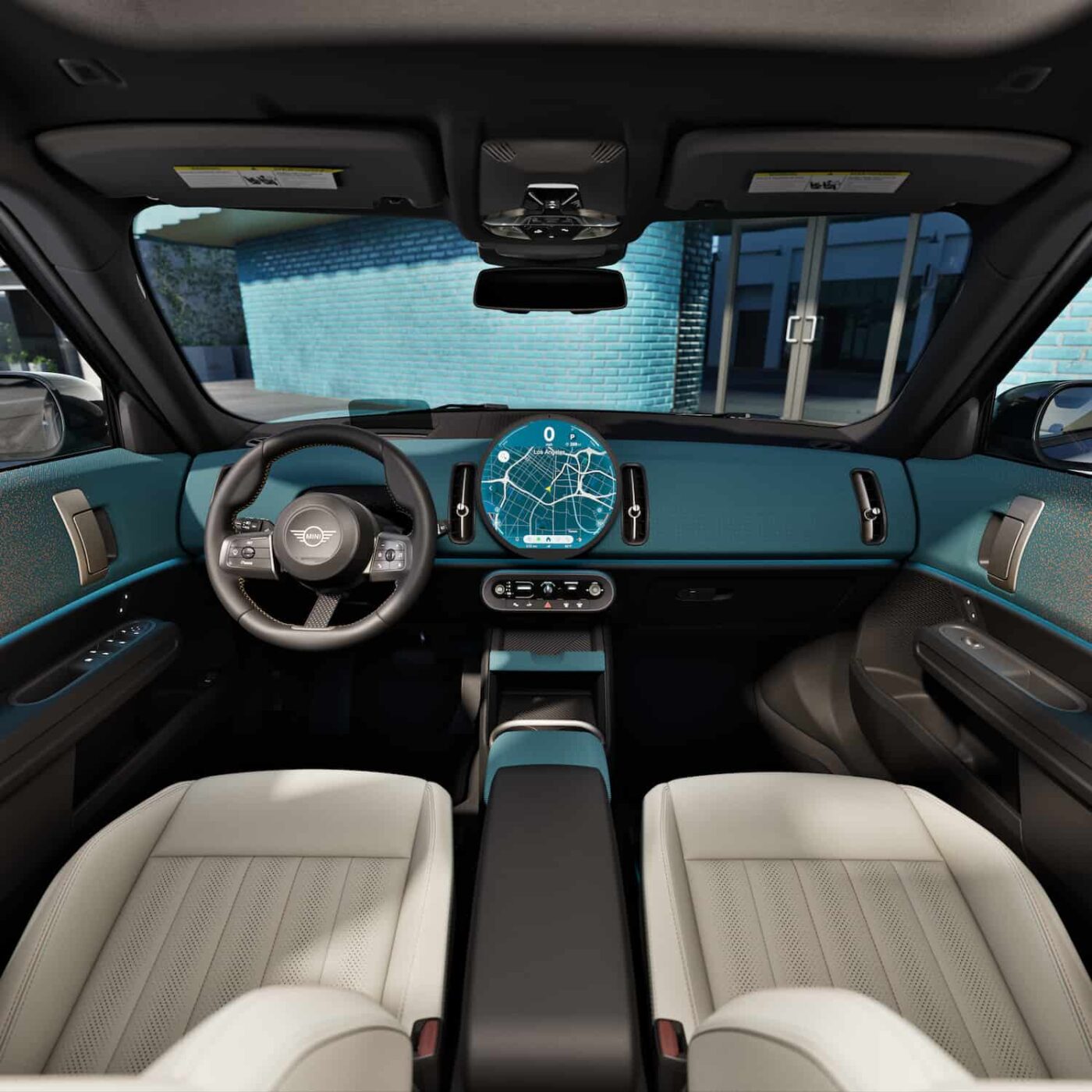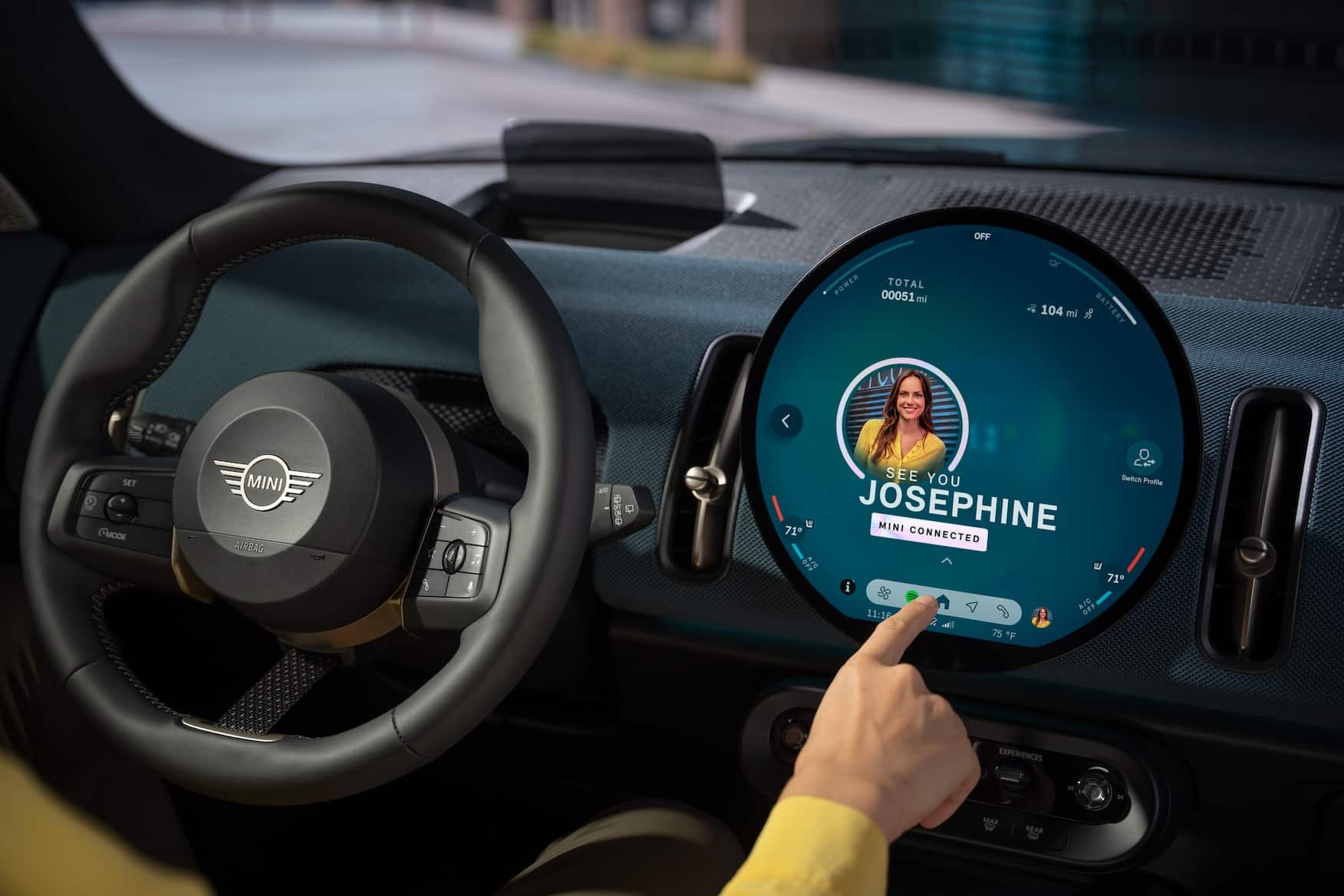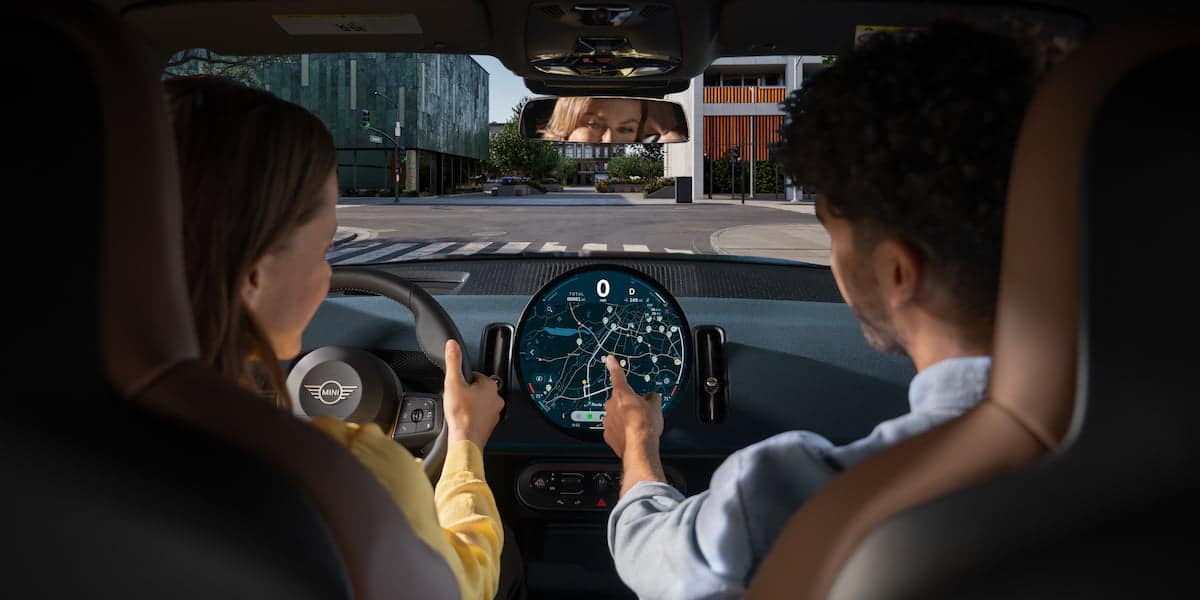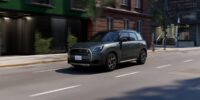If you’re considering a Mini Cooper, you’re probably drawn to its stylish design, fun driving experience, and compact size. But how does it measure up when it comes to safety? Whether you’re a new driver, a city commuter, or just curious about the Mini Cooper crash rating, understanding how this car performs in accidents is important.
In this guide, we’ll break down the Mini Cooper’s crash test results, safety features, and whether it’s a good choice for new drivers.
How Are Crash Ratings Determined?
When you’re shopping for a car, one of the most important factors to consider is safety. But how do we know how safe a car really is? That’s where crash testing comes in. In the U.S., two major organizations are responsible for evaluating vehicle safety:
- The National Highway Traffic Safety Administration (NHTSA)
- The Insurance Institute for Highway Safety (IIHS)
These organizations conduct rigorous crash tests to see how well a vehicle protects passengers in an accident. They also test safety features designed to prevent crashes in the first place. Let’s break down how these crash tests work and what they mean for your Mini Cooper.
What Does the NHTSA Do?
The National Highway Traffic Safety Administration (NHTSA) is a government agency that evaluates vehicle safety using a five-star rating system. The more stars, the better the vehicle performs in crash tests.
Here’s what the NHTSA tests:
- Frontal Crash Tests – Simulates a head-on collision at 35 mph between two vehicles of the same size. It evaluates how well the car protects the driver and front-seat passenger.
- Side Crash Tests – Measures how well the vehicle protects passengers from side-impact crashes, including crashes involving poles or trees.
- Rollover Resistance – Tests the likelihood of the vehicle tipping over in a sharp turn or losing control on the road.
What do the star ratings mean?
- Five stars – The highest rating, meaning the vehicle performed exceptionally well in crash tests.
- Four stars – A very good rating, but with slightly higher risks in certain types of crashes.
- Three stars – An average rating, meaning the vehicle provides decent protection but has some weaknesses.
- Two stars – A below-average rating, indicating higher risk of injury in certain crashes.
- One star – The lowest rating, meaning the vehicle performed poorly in crash tests.
Why does the NHTSA rating matter?
NHTSA’s five-star rating is one of the most widely recognized safety standards. Many car buyers check these ratings before making a purchase. A high rating means the car has been proven to protect passengers in real-world crash scenarios.
What Does the IIHS Do?
The Insurance Institute for Highway Safety (IIHS) is an independent, non-government organization funded by insurance companies. While the NHTSA focuses on overall crash performance, the IIHS takes a deeper look at specific safety areas and crash-prevention technologies.
The IIHS doesn’t use stars—instead, it assigns one of four ratings to different aspects of a vehicle’s safety:
- Good – The best rating, meaning the car provided excellent protection.
- Acceptable – A decent rating, but with some room for improvement.
- Marginal – Below average, meaning the car showed noticeable safety weaknesses.
- Poor – The lowest rating, meaning the car did not perform well in that category.
The IIHS tests include:
- Frontal Impact (Moderate Overlap Test) – Simulates a crash where the front of the car hits another vehicle or object.
- Frontal Impact (Small Overlap Test) – A more severe test that evaluates what happens when only part of the car’s front end crashes into an object, like a tree or pole.
- Side Crash Test – Assesses how well passengers are protected from side impacts.
- Roof Strength Test – Measures how well the roof holds up in a rollover accident.
- Head Restraints and Seat Test – Looks at how well the seats and headrests prevent neck and spine injuries during a rear-end crash.
- Crash Prevention & Headlight Evaluation – Tests automatic emergency braking (AEB), lane departure warning systems, and headlights to see how they help prevent crashes before they happen.
What makes the IIHS different from the NHTSA?
While the NHTSA focuses on crash survival, the IIHS also evaluates crash prevention and accident-avoidance features. This makes the IIHS ratings valuable for people who want to know how safe and tech-advanced a car really is.
How Do These Ratings Apply to the Mini Cooper?
Now that you know how crash tests work, let’s talk about what this means for the Mini Cooper.
- Mini Cooper models consistently earn high marks in both NHTSA and IIHS tests.
- Frontal and side-impact protection is strong, earning four to five stars from the NHTSA.
- The IIHS typically rates Mini Coopers as “Good” in most crash categories, meaning they perform well in real-world accident situations.
- Advanced driver-assist features like automatic braking and lane departure warnings help prevent crashes before they happen.
So if you’re wondering whether a Mini Cooper is a safe choice, these tests prove that it holds its own against other compact cars when it comes to crash protection.
Frequently Asked Questions About Crash Ratings
Why do some cars get different ratings from the NHTSA and IIHS?
The NHTSA and IIHS test vehicles in different ways. A car might do well in the NHTSA’s front crash test but struggle in the IIHS’s small overlap test. That’s why it’s important to look at both ratings.
Are smaller cars like the Mini Cooper safe in a crash?
Yes. While smaller cars can be at a disadvantage in accidents with larger vehicles, strong safety engineering and advanced technology help Mini Coopers protect passengers. Their high crash test ratings and stability control systems make them a safe option in the compact car category.
What’s the difference between crash test ratings and real-world safety?
Crash tests are done in controlled environments, so they don’t account for every real-world variable. Factors like road conditions, driver behavior, and the size of the other vehicle in a crash all impact safety. That’s why crash prevention features, such as automatic emergency braking and lane departure warnings, are just as important as crash test ratings.
Can safety ratings change over time?
Yes. As crash tests become more advanced and safety standards improve, vehicles that once had top ratings may not perform as well in newer tests. That’s why it’s important to check the latest crash ratings for any vehicle you’re considering.
How do I find the safety rating for a specific Mini Cooper model?
The latest crash ratings for Mini Cooper models can be found on the NHTSA and IIHS websites. Mini Cooper dealerships and manufacturer websites may also provide detailed safety information for each model.
Crash ratings are a crucial factor when choosing a car, and the Mini Cooper holds up well in safety tests. Whether you’re looking for a compact city car or a stylish daily driver, Mini Coopers provide strong crash protection and advanced safety features to keep you secure on the road.
Mini Cooper Crash Rating: How Does It Perform?
When choosing a car, safety is just as important as performance, design, and fuel efficiency. The Mini Cooper is well-known for its compact size and fun driving experience, but how does it hold up in crash tests? Despite being a smaller vehicle, the Mini Cooper has consistently earned strong safety ratings from trusted organizations like the National Highway Traffic Safety Administration (NHTSA) and the Insurance Institute for Highway Safety (IIHS).
In this section, we’ll break down the Mini Cooper’s crash test scores, what they mean, and how they compare to other vehicles.
How Safe Is the Mini Cooper? Understanding Its Crash Test Ratings
Mini Coopers go through extensive crash testing to determine how well they protect passengers in different types of accidents. These tests measure frontal impact, side impact, rollover risk, and crash avoidance technology.
Here’s how recent Mini Cooper models have performed in crash tests.
NHTSA Ratings for the Mini Cooper
The NHTSA (National Highway Traffic Safety Administration) is a government agency that evaluates vehicle safety using a five-star rating system. The more stars, the better the vehicle performs in a crash.
For the Mini Cooper Hardtop, recent crash test results have been solid:
- Overall Crash Safety Rating: 4 out of 5 stars
- Frontal Crash Test: 4 stars
- Side Crash Test: 5 stars (Strong protection in side-impact collisions)
- Rollover Resistance: 4 stars, which is typical for small cars
These ratings show that the Mini Cooper does very well in side-impact crashes, which is important for city driving where intersections and side collisions are common. While the frontal crash rating is slightly lower at 4 stars, it’s still a strong score for a compact car.
IIHS Ratings for the Mini Cooper
The IIHS (Insurance Institute for Highway Safety) is an independent safety organization that rates vehicles based on several crash tests. Unlike the NHTSA, IIHS does not use stars but instead gives ratings of Good, Acceptable, Marginal, or Poor in different categories.
For the Mini Cooper, here’s how it scores:
- Side-Impact Crash Test: Good (the highest possible rating)
- Roof Strength: Good (important for rollover protection)
- Moderate Overlap Front Crash Test: Good
- Small Overlap Front Crash Test: Acceptable (this test simulates hitting a pole or another car on just one side of the front end)
- Head Restraints and Seat Safety: Good (helps prevent neck and spinal injuries in rear-end crashes)
- Front Crash Prevention Technology: Superior or Advanced, depending on the model and optional features
One of the standout safety features in newer Mini Cooper models is their crash prevention technology, which helps drivers avoid accidents altogether. Features like automatic emergency braking, lane departure warning, and pedestrian detection have earned high marks from the IIHS.
What Do These Crash Ratings Mean for Everyday Driving?
If you’re wondering what these numbers mean in real life, here’s the bottom line:
- The Mini Cooper is one of the safer compact cars on the market despite its small size.
- It performs very well in side-impact crashes, which are common in city traffic.
- It has strong roof strength, which is important in the event of a rollover.
- Advanced safety features help prevent accidents before they happen.
- The frontal crash rating is good but not perfect, meaning drivers should still be mindful of larger vehicles.
How Does the Mini Cooper Compare to Other Small Cars?
Since the Mini Cooper is a compact car, it’s important to compare its safety to other vehicles in the same category. Here’s how it holds up:
| Vehicle | NHTSA Overall Safety Rating | Side-Impact Rating | Frontal Crash Rating | Rollover Risk |
| Mini Cooper Hardtop | 4 Stars | 5 Stars | 4 Stars | 4 Stars |
| Honda Fit | 5 Stars | 5 Stars | 4 Stars | 4 Stars |
| Volkswagen Golf | 5 Stars | 5 Stars | 5 Stars | 4 Stars |
| Mazda3 Hatchback | 5 Stars | 5 Stars | 5 Stars | 4 Stars |
While some compact cars like the Volkswagen Golf and Mazda3 receive slightly higher ratings in frontal crash tests, the Mini Cooper still performs well in side-impact protection and rollover resistance. It also has advanced crash prevention technology that some older models of competitors may not offer.
Frequently Asked Questions About Mini Cooper Safety
Is the Mini Cooper a safe car for highway driving?
Yes. The Mini Cooper performs well in crash tests and has strong stability control, which helps keep the car balanced at high speeds. However, because it’s a small car, it may feel more vulnerable next to larger SUVs and trucks.
Are Mini Coopers good in bad weather?
Mini Coopers come with Dynamic Stability Control (DSC) and Traction Control, which help the car maintain grip on wet or icy roads. However, since they are small and lightweight, they are not the best choice for deep snow or extreme winter conditions unless equipped with winter tires.
Do Mini Coopers have advanced safety features?
Yes. Many newer Mini Cooper models come with:
- Automatic Emergency Braking – Helps prevent rear-end collisions.
- Lane Departure Warning – Alerts you if you drift out of your lane.
- Pedestrian Detection – Detects people crossing the road and applies the brakes if necessary.
- Rear Parking Sensors and Backup Camera – Helps with visibility while reversing.
Are Mini Coopers more dangerous because they are small?
While larger vehicles do provide more physical protection in a crash, the Mini Cooper makes up for its small size with strong safety features, rigid construction, and smart technology. It performs better than many small cars in side-impact and rollover tests.
Should I be worried about the Mini Cooper’s frontal crash rating?
Not necessarily. While a 4-star frontal crash rating isn’t perfect, it is still a strong score. Mini Coopers also have crash prevention features that help drivers avoid frontal collisions altogether.
Is the Mini Cooper a Safe Car?
If safety is a top concern for you, the Mini Cooper is a great choice in the compact car category. It has strong side-impact protection, good rollover resistance, and advanced safety features to help prevent crashes before they happen. While its small size means it doesn’t have the same level of impact protection as larger vehicles, it holds its own against other compact cars in crash tests.

Are Mini Coopers Safe for New Drivers?
Choosing a first car is a big decision, especially when it comes to safety. Whether you’re a new driver or a parent looking for a safe car for your teen, you might be wondering: Are Mini Coopers safe for new drivers?
The answer depends on what you’re looking for in a first car. The Mini Cooper has a lot going for it—it’s small, easy to handle, packed with safety features, and fun to drive. However, like any car, it has both strengths and limitations when it comes to safety. Let’s break it down.
Why the Mini Cooper Can Be a Safe Choice for New Drivers
There are a few key reasons why the Mini Cooper is a solid choice for someone just learning to drive.
1. Strong Safety Ratings
New drivers need a car that offers good protection in the event of an accident. As mentioned earlier, the Mini Cooper has received strong crash ratings from both the National Highway Traffic Safety Administration (NHTSA) and the Insurance Institute for Highway Safety (IIHS).
- 4 out of 5 stars overall from the NHTSA
- 5 stars in side-impact tests, meaning excellent protection in the event of a T-bone crash
- Good ratings from the IIHS in most crash categories, including roof strength and side-impact tests
While it’s a compact car, its solid structure and smart engineering help it perform well in crashes.
2. Advanced Safety Features Help Prevent Accidents
Avoiding an accident is just as important as surviving one. That’s why newer Mini Cooper models come with high-tech safety features designed to assist drivers and prevent crashes.
Some of the most useful safety features for new drivers include:
- Forward Collision Warning – Alerts the driver if they are too close to another vehicle, helping avoid rear-end crashes.
- Automatic Emergency Braking – If a crash is likely, the car can automatically apply the brakes to reduce impact or avoid the accident entirely.
- Lane Departure Warning – Alerts the driver if they start drifting out of their lane without signaling.
- Rear Parking Sensors and Backup Camera – Makes reversing easier and helps avoid collisions while backing up.
- Pedestrian Detection System – Can detect people crossing the road and apply the brakes if necessary.
These features add an extra layer of protection for new drivers who are still developing their awareness and reaction time behind the wheel.
3. Easy to Maneuver for City and Suburban Driving
One of the biggest challenges for new drivers is handling a vehicle in tight spaces, such as parking lots, busy intersections, or narrow streets. The Mini Cooper’s compact size and responsive steering make it much easier to handle than larger vehicles.
- Small footprint – Makes parking in tight spots easier.
- Excellent turning radius – Helps with U-turns and navigating narrow streets.
- Quick acceleration and braking – Allows for more precise control in traffic.
For someone who is still learning how to judge space and maneuver a vehicle, driving a Mini Cooper can feel more manageable than a bulky SUV or sedan.
4. Stability and Traction Control for Safer Driving in Bad Weather
Many new drivers are still getting used to handling different road conditions, like rain, snow, or icy pavement. Mini Coopers come equipped with features that help improve control on slippery roads, including:
- Dynamic Stability Control (DSC) – Helps prevent skidding by automatically adjusting engine power and braking to keep the car stable.
- Traction Control System (TCS) – Reduces wheel spin on slippery roads, helping the car maintain grip.
- Anti-lock Braking System (ABS) – Prevents the wheels from locking up during sudden braking, reducing the risk of skidding.
These systems help reduce the chances of losing control, especially in wet or slippery conditions—an important factor for new drivers who may not have much experience in bad weather.
Potential Concerns for New Drivers
While the Mini Cooper has many advantages for new drivers, there are also some downsides to consider.
1. Small Size Compared to Larger Vehicles
The Mini Cooper is one of the smallest cars on the road, which means that in an accident involving a larger SUV or truck, it may not provide the same level of protection as a bigger vehicle.
- While it scores well in crash tests for small cars, physics still plays a role—larger, heavier vehicles tend to fare better in multi-vehicle collisions.
- On highways, where big trucks and SUVs are common, new drivers need to be extra cautious when changing lanes or merging.
That said, driving safely and using defensive driving techniques can help offset this concern.
2. Limited Rear Visibility
The Mini Cooper’s small rear window and thick roof pillars can create blind spots, making it harder to see what’s behind the car when reversing.
- This is especially important for new drivers, who may not be as skilled at using their mirrors effectively.
- Luckily, Mini Coopers come with rear parking sensors and backup cameras, which help improve visibility when reversing.
New drivers should make a habit of checking their surroundings carefully and relying on both mirrors and technology to ensure safety.
3. Lower Ground Clearance and Ride Comfort
Since the Mini Cooper is designed for sporty handling, it has a lower ground clearance than some other small cars. This means:
- It may not handle rough roads or potholes as smoothly as a sedan or crossover.
- If a new driver lives in an area with a lot of uneven roads, speed bumps, or snow, they may need to be extra careful when driving to avoid scraping the bottom of the car.
This isn’t a dealbreaker, but it’s something to consider depending on where the car will be driven most often.
Is the Mini Cooper a Good First Car?
For new drivers, the Mini Cooper is a great option if they want a car that is:
- Safe and highly rated in crash tests
- Equipped with advanced safety features to prevent accidents
- Small and easy to maneuver in city driving and parking
- Fun to drive, with responsive steering and good handling
- Packed with stability and traction control for safer driving in wet conditions
However, new drivers should also keep in mind that:
- Its compact size means it may not provide as much protection in a crash with a large SUV or truck.
- Rear visibility can be limited, so drivers need to rely on mirrors and cameras.
- Low ground clearance may not be ideal for rough roads or snowy areas.
Overall, if safety, easy handling, and modern driver-assist features are priorities, the Mini Cooper is a strong choice for a new driver. However, as with any small car, defensive driving and awareness of larger vehicles on the road are key to staying safe.

Mini Cooper Safety Features That Enhance Protection
Beyond crash test ratings, Mini Cooper has included several modern safety technologies to help prevent accidents and protect passengers in a crash.
Standard Safety Features in Modern Mini Coopers:
- Rearview Camera – Helps with parking and reversing.
- Multiple Airbags – Front, side, knee, and curtain airbags provide full coverage in an accident.
- Tire Pressure Monitoring System (TPMS) – Alerts drivers when tire pressure is low to help prevent blowouts.
- Cornering Brake Control (CBC) – Improves braking performance during turns.
- Pedestrian Detection System – Helps reduce the risk of accidents in urban areas.
Mini Cooper also offers optional upgrades like Adaptive Cruise Control, Parking Assist, and a Head-Up Display for additional safety and convenience.
How Does the Mini Cooper Compare to Other Small Cars?
The Mini Cooper crash rating holds up well against other compact vehicles, but how does it compare to competitors like the Honda Fit, Volkswagen Golf, and Mazda3?
- Crash Test Scores – The Mini Cooper performs as well as or better than many other small cars, particularly in side-impact protection.
- Safety Features – Compared to some entry-level models from competitors, the Mini Cooper includes more standard driver assistance technologies.
- Handling and Agility – While some compact cars have slightly better crash absorption due to their larger frames, the Mini Cooper’s sharp handling and stability control help drivers avoid accidents altogether.
Final Thoughts: Is the Mini Cooper a Safe Car?
If you’re considering a Mini Cooper and wondering about its safety, the Mini Cooper crash rating shows that it performs well in crash tests and comes with modern safety features. While it is a small car, it offers good protection in most accidents, especially with its side-impact ratings and driver assistance technology.
For new drivers, the Mini Cooper is a solid choice thanks to its easy handling and advanced safety features. However, as with any small vehicle, staying aware of larger cars on the road is important.
Find the Right Mini Cooper for You
Interested in a Mini Cooper that combines style, fun, and safety? Check out our latest models to see which one fits your needs. Have questions? Contact us today to learn more about Mini Cooper’s safety features and available options.






